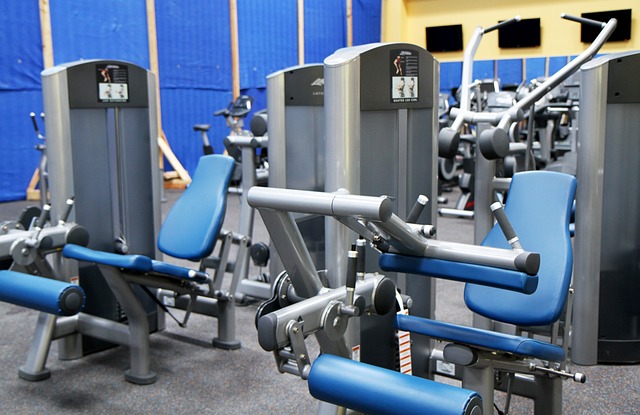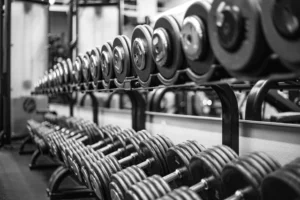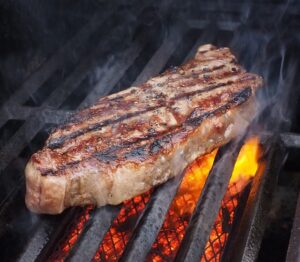There seems to be great debate about the optimal way to gain muscle and strength through weight lifting. I go the gym regularly and speak to different people about the best way to work out, and often get different answers from each person. Although there is much confusion in the weight lifting industry, one thing is clear; your goals will dictate the strategy you use.
Typically, weight training for strength, muscle hypertrophy (growth) and endurance require different weight used and different repetitions performed, although there is overlap between the three goals. This blog is written as a basic outline so you can understand everything there is to know about resistance training and use this knowledge to reach your goals!
One rep maximum
A few basic terms which I will use throughout this blog
- Repetition – one complete motion of an exercise (Ex. One bicep curl with dumbbell).
- Set- series of consecutive repetitions of an exercise without pause (Ex. If you curl a weight five times in a row without stopping to rest, that is considered one set).
Almost every article I read talked about 1 rep maximum. It refers to a weight used which you are only able to perform 1 repetition of, hence the name 1 rep maximum. You can calculate your 1 rep max by going to this site and filling out the chart. Once you figure out your one rep maximum the chart will tell you the percentage of your 1 rep maximum that each weight you use corresponds to. This is important because it is related to your goals as you will see below.
Repetitions
- Muscular hypertrophy- cells in muscle grow causing an increase in the size of the muscle
The amount of repetitions performed can be divided into three categories: low (1-5), moderate (6-12), or high (>15) (1). The amount of repetitions you perform will impact which energy system is used and subsequent muscle growth (1). Studies have demonstrated that high repetitions results in significantly less muscle hypertrophy than performing low or moderate amounts of repetitions (1). A training load less than 65% of your 1RM is insufficient in producing substantial hypertrophy. Training with light weight can produce metabolic stress but it is unlikely that it will lead to significant muscle growth.
So, which is better for muscle hypertrophy, low or moderate repetitions? Unsurprisingly, this is a topic of great debate. Power lifters fit into the low range group and obviously have large muscles and great strength while bodybuilders fit into the moderate range group and while weaker than power lifters they may have more muscular definition. Obviously, both are adequate to produce significant muscular hypertrophy, so it comes down to personal choice. For me muscle size is more important than muscular strength so I tend to perform 6-12 repetitions for most exercises but this has come with a price. While I can see muscle growth and leaning of my body, my strength has not really changed much in weeks. Studies have shown that moderate rep range produces greater increases in both growth hormones and testosterone than low rep range (1).
As if matters were not confusing enough one study found that relative intensity only accounts for 18-35% of the muscle hypertrophy response, meaning the other 65-82% of muscle hypertrophy lies in genetics and other variables besides intensity (2).
Volume
- Load- refers to the percent of your 1 rep maximum that you are lifting
In regards to strength training volume refers to the total amounts of repetitions, sets and load performed in a workout session. Lower volume would mean less time lifting than higher volume due to a decreased amount of sets and reps. Higher volume training has shown greater muscle hypertrophy than lower volume training likely resulting from greater muscle damage, metabolic stress and muscle tension (1). Testosterone levels are also increased more in higher volume training. More growth hormones are released from performing multiple sets of exercises than single set exercises; so performing more sets stimulates more release of growth hormones.
Loading
Loading refers to the amount of weight lifted or the resistance experienced when performing an exercise. If you are a beginner you will see increased strength even with a light load. For more advanced weight lifters increasingly heavy loads will be needed in order to increase strength. As our muscles adapt we must continuously stress them in order to develop increased strength.
Split body training vs. full body training
One of the biggest debates in body building revolves around the effectiveness of split body training vs. full body training. To understand full body training, think of strong men; people that perform full body workouts such as squats and dead lifts. These people believe that performing isolated exercises like bicep curls are a waste of time. They are most likely right, at least for their goals, which are increasing their strength while being unconcerned about their appearance.
Bodybuilders on the other hand are proponents of split body training. They are more concerned with appearance and having every muscle be large and defined. For them strength is a byproduct of their main goal. They would rather be shredded and weak than less defined but strong. Because of these goals bodybuilders perform a lot of isolated exercises such as bicep curls, tricep workouts and other small muscle group exercises.
So, which group is correct? As mentioned, both are correct, at least for accomplishing their goals. A split body routine maximizes the hypertrophic response by performing a high number of sets for each muscle group (1). Performing split routines also allows more recovery time for each muscle group compared to full body workouts. Stressing each muscle by isolating it and performing multiple sets results in a prolonged muscle stimulus thus possibly heightening anabolic (muscle building) secretions and causing cell swelling and muscle ischemia (temporary restriction of blood flow to muscles) (1).
Exercise selection
It is important to vary the types of exercises you perform. Each muscle is made up of many different types of muscle fibers and it is necessary to stimulate each type of fiber. Performing different exercises helps stress different parts of the muscle which is why variety is good. Even a muscle as small as the bicep requires different exercises to stimulate the different areas of the muscle so I am sure you can understand how important it would be to complete exercises that target muscles from different angles and stress different areas of the same muscle. Although isolated exercises are great full body workouts like the squat utilize a lot of muscles in the legs and lower back and causes us to use stabilizer muscles as well. These are some of the reasons why it is ideal to engage in both isolated and full body workouts.
Interesting fact- over 200 muscles are activated when squatting! Imagine trying to target all of these muscles through isolated exercises!
Rest time between sets
Rest time refers to the amount of time you let pass between sets. For instance, if you are curling a dumbbell and complete five reps then stop, the rest time is the time from the stopping of one set to the start of the next set. Rest intervals are typically broken up into three categories: short (30 seconds or less), moderate (60-90 seconds) or long (greater than 3 minutes). Depending on your goals you will pick one category. Short intervals tend to produce great metabolic stress (since muscles do not have time to fully recover between sets) but significantly decrease the amount of weight used (muscles are strained during the whole exercise) thereby offsetting the benefits of metabolic stress and setting the stage for less than optimal maximization of hypertrophic gains. This strategy is not recommended for achieving the greatest hypertrophic response of muscles.
A strategy on the other end of the spectrum would be to take long breaks in order to allow muscles to fully recover. This is a great strategy to maximize mechanical tension (amount of weight used) since muscles can recover between sets. Unfortunately you sacrifice metabolic stress at the expense of maximum mechanical tension. You can lift a lot of weight this way but the long breaks between sets greatly decrease the metabolic stress put on the muscles.
The happy medium appears to be moderate rest intervals of 60-90 seconds. It has been shown that athletes recover the majority of their strength within a minute of completing a set (1). Moderate rest is associated with greater hypoxia (lack of oxygen), making it more likely for increased muscular growth. Moderate rest also induces the greatest metabolic buildup, causing a large spike of anabolic hormones following the workout. Obviously moderate rest appears to be the best choice, right? Well, not so fast.
Studies have shown that these metabolic advantages (such as increased release of anabolic hormones) may subside over time. A study comparing the anabolic hormone response to workout routines with either a 1 minute or 2.5 minute rest interval found that initially the 1 minute rest interval produced a greater spike in hormones but after 5 weeks of training there were no significant differences in hormone response between both groups.
Exercise order
There are three basic workout structures: 1) total body workouts, 2) upper/lower body split workouts, and 3) muscle group split routines (2). Total body workouts stress most of the major muscles of the body (such as the squat). Upper/lower body splits are when upper body workouts (chest, back, shoulders) are performed one day and lower body workouts (quads, calves, lower back) on the following day. An example would be: Monday- upper body, Tuesday – lower body, Wednesday off, Thursday- upper body and Friday- lower body. Muscle group split routines are when you work out the same specific muscle groups in one workout. An example would be working out your chest followed by working out your triceps (chest and triceps share similar muscle groups).
If you plan on doing multiple joint exercises like squats do them in the beginning of the workout so that you are fresh and your form is not compromised from fatigue. There are a few basic guidelines for exercise order. They all revolve around working larger muscle groups before working smaller muscle groups. This is because working larger muscles while fresh will produce a greater release of anabolic hormones than is seen when working smaller muscles. When training individual muscle groups perform higher intensity exercises before lower intensity exercises. An example would be performing bench press before tricep dips.
Frequency
How many times per week should you workout specific muscles? Like all the previous sections, that depends on your goals. If you are training for strength and performing high load low repetition sets your body will need more time to recover between workouts. Extremely heavy loads may require up to 72 hours to fully recover (3). Beginners likely require more rest compared to more advanced lifters. Advanced bodybuilders are capable of using a split where they work out one muscle in the morning and another group in the evening, allowing them to complete 8-12 training sessions per week. Olympic lifters may reach 18 sessions per week! It really comes down to how much free time and dedication you have for weight lifting. I personally do 5 sessions per week. Just remember, even 2 or 3 sessions is significantly better than 1.
Variation
It is important to vary your workouts. The current theory is when you start working out you shock your muscles but soon your muscles adapt and are no longer shocked but instead go stale where your gains begin to plateau (level out and cease to increase). Because of this it is necessary to vary volume, intensity and to choose a variety of exercises. If you consistently perform 8 repetitions for an exercise and after a few weeks you are stuck at 8 reps you likely need to vary your workout. Increase the weight and perform fewer repetitions. You can also alternate every week. One week focus on strength while performing 4-6 reps of a heavy load and the next week use a lighter load while performing 8-12 repetitions. This will help keep your muscles from adapting and help you increase muscular strength and hypertrophy.
Rate of progress
No matter how much you vary your volume, load and exercise selection your rate of progress will slow over time. A review found that during a 4 week to 2 year period of weight lifting, muscular strength increased 40% in untrained individuals, 20% in moderately trained individuals, 16% in trained individuals, 10% in advanced individuals and 2% in elite individuals (3). This difficulty in continuously getting stronger can occur in just a few months. The reason for this is believed to be because we reach our genetic potential. Short term studies have shown that the majority of strength gained occurs in the first 4-8 weeks of training.
A word of wisdom to beginners
While multiple joint exercises such as squats, deadlifts and power cleans are excellent for building muscle, beginners should be careful. If these exercises are performed incorrectly (such as using all back and no legs for a deadlift) serious injury can occur. Before you try these exercises watch YouTube videos on proper form or use a trainer. Even if you think you have the proper form, start with very light weight until you are comfortable moving onto a heavier load. If you perform these exercises and the next day your back or somewhere else is in a lot of pain you probably did them incorrectly. I have been weight lifting for 15 years and I still ask people at the gym to watch my form when I squat or deadlift.
Overtraining
Overtraining is when you train a muscle too often or do not allow enough time for recovery. If you are a recreational weightlifter you should not have this problem but professional bodybuilders and strongmen may. Overtraining leads to a catabolic response (muscle breakdown) rather than an anabolic response (muscle building). Overtraining is marked by chronically decreased levels of testosterone and luteinizing hormone and increased cortisol (released when you are stressed out-mentally or physically) (1).
Discussion
Hopefully I have covered all of the relevant areas of strength training. The research is confusing and sometimes contradicting but I did my best to outline the most current research. Like always, if you have any questions please leave a comment or email me. Until next time!
References
- Schoenfeld, B. J. (2010). The mechanisms of muscle hypertrophy and their application to resistance training. The Journal of Strength & Conditioning Research, 24(10), 2857-2872.
- Fry, A. C. (2004). The role of resistance exercise intensity on muscle fibre adaptations. Sports medicine, 34(10), 663-679.
- Kraemer, W. J., & Ratamess, N. A. (2004). Fundamentals of resistance training: progression and exercise prescription. Medicine and science in sports and exercise, 36(4), 674-688.





What kind of routine is recommended to have a body shape like….let’s say “Bruce Lee” (thin, but muscled). ?
What kind of routine is recommended for soccer players? (the have a considerable muscle mass, but not like….”The Rock” let’s say)
I read for example that a lot of their diets are strictly orientated in eating fish and chicken, with no “red” meat on it. Is it true?
Regards?
Hey Bernal. Bruce lee had a body that even bodybuilders envy. He was 5’8 or 5’9 and about 130 pounds but had ridiculous lats and great definition. I actually bought a book about his training methods. He did a ton of cardio and weight training. He was insanely strong for his size. As for his diet he ate a lot of Chinese vegetables and anything that his wife made for him. He didn’t focus too much on nutrition. He would even put egg shells in his blended meals. His results are probably from great genetics and a lot of lifting/cardio. Most people would not be able to get his build.
Soccer players to my knowledge do not engage in heavy lifting. They lift weights but likely are not that strong. Most of them are lean but have little muscle definition; at least compared to bodybuilders. They definitely have good builds but it is from the hours of cardio they do every day. If they put on too much muscle they would not be able to run as much as they do. Having unnecessary muscles take more oxygen and greatly reduce cardio. If you watch UFC the fighters that are built like bodybuilders USUALLY have really bad cardio. The fighters that are lanky or have little muscle usually have the best cardio. The Rock would probably drop dead if he had to run 5 miles.
I know a lot of bodybuilders tend to eat chicken and fish with little red meat. I am not actually sure why they cut out red meat. Maybe they think it has too much fat. Or that it causes cancer. Or maybe it is something completely different. In bodybuilding there is much misinformation about diet that gets started by one person and just passed on from person to person over time until it becomes an unquestioned truth. I read a few nutrition articles on bodybuilding.com and the people writing them are basically trainers with limited knowledge of proper nutrition.
Hope this helps. If you have any more questions or comments feel free to leave them!
Very informative blog! My only interest in weight training would be repetitions with small weights. 🙂